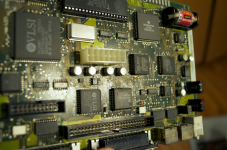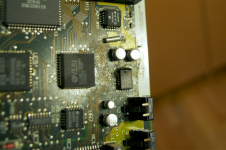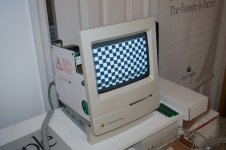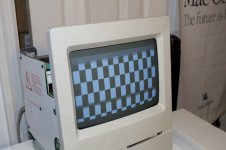krye
Well-known member
The hdd in my Classic died a few weeks ago. I've been so busy with other projects that I just haven't had the time to open it up and swap the drive. Last night I had to make some System 7 disks from some images on my external hdd. Since I was already doing something on my Color Classic, I figured for quickness I'd just connect the external to the Classic and do it on that since the external is bootable. I hooked it up and turned the Mac on.
It made a weird distorted beep sound and gave me this:
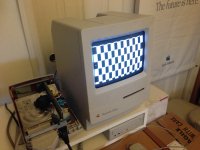
What?! Totally unexpected. This machine has been a sold performer since I got it. Now I'm wondering if the internal hard drive is dead after all or if it was just signs of things to come. Bummer.
I'll have to open it up and give it a cleaning and see if there's any leaky caps.
The HD20 I scored on eBay is "out for delivery" and should be on my doorstep when I get home from work. I was hoping to tinker with that. Hopefully the Classic isn't a disaster and I can tackle both. If not, there's always the weekend.
It made a weird distorted beep sound and gave me this:

What?! Totally unexpected. This machine has been a sold performer since I got it. Now I'm wondering if the internal hard drive is dead after all or if it was just signs of things to come. Bummer.
I'll have to open it up and give it a cleaning and see if there's any leaky caps.
The HD20 I scored on eBay is "out for delivery" and should be on my doorstep when I get home from work. I was hoping to tinker with that. Hopefully the Classic isn't a disaster and I can tackle both. If not, there's always the weekend.

